
Please install a more recent version of your browser.
26 April 2023
7 minutes read
Milan Design Week is over again! According to many, it was another 'normal' edition after the past corona years, although they have left their mark. We had already listed a number of must-sees in advance, but discovered a lot of other new Belgian talent or new products by well-known designers.
Was it another 'normal' edition? The Salone itself attracted 307,418 visitors, which is 15% more than last year, but still a lot less than the 386,000 from 2019. And were there any surprising things? Not that many. Apparently, a lot of brands waited to do new launches because audiences from outside Europe had not yet seen last year's firsts. Asian visitors were indeed back, but the halls upstairs remained empty, so there were a lot fewer exhibitors.
And how was it in the city? Companies are increasingly aiming for a city presence, or leaving the fair for a downtown showroom. Brera and Tortona remain busy venues. 5VIE and Isola have their audiences. At Alcova, you quickly found yourself queuing for an hour to get in, although unlike other years, reactions there were not as enthusiastic. An initiative like Design Variations, which used to be one of the drawlists at Palazzo Litta, has completely lost its importance.
Those who still want to check out a complete overview of all the Belgians in Milan can still do so on the Belgian Design Map.
1. Last year, Gilles Werbrouck won the Salone Satellite Award. Now the third prize went to Ahokpe + Chatelin. Ku Do Azo is a hammock designed for our European interiors. The weft of the fabric consists of recycled yarns coming from second-hand knitted sweaters that end up on the African market. The hammock is also available in an outdoor version in polypropylene leftover spools from textile companies in Belgium.
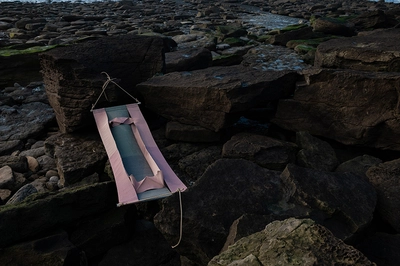
Ku Do Azo, Ahokpe + Chatelin © Lucas Denuwelaere
2. Marianne De Cock works primarily with wood and specifically veneers. In the Fold series, the focus is on form and functionality. The series is made of larch veneer where intarsia or inlay is used in an innovative way. The table and side table are custom made and available in four colors. The table is finished with a black stain and a PU varnish, the side table with a gray varnish.
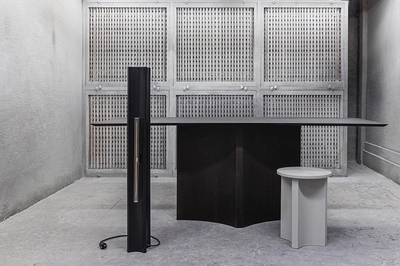
3. During her education Esther De Vos developed a love for making furniture. During a training course in welding, she discovered her love for steel. The mixing of steel and glass, two contrasting materials, was the starting point for her MAGAZINE RACK. The design is pure and simple with playful features. For example, the two angled legs give the elegant structure a dynamic touch. A transparent coat of varnish enhances the character of the steel, and the purity of the artisanal welding remains visible.
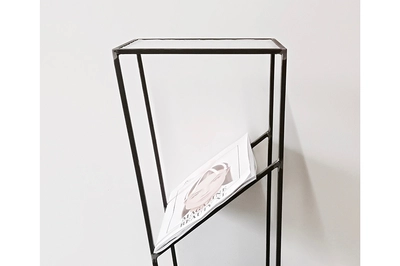
MAGAZINE RACK, Esther De Vos
4. Andreas De Smedt of Not A Desk has already sold more than 3,000 standing desks. But working standing is not the only solution for a healthy work style. What matters is that you change your posture, ideally every half hour. Therefore, the lounge chair offers the possibility to work lying down in a posture that reduces stress on the body. The standing desk can be converted into a lap desk. The lounge chair can be used not only for power napping but also as a workstation.
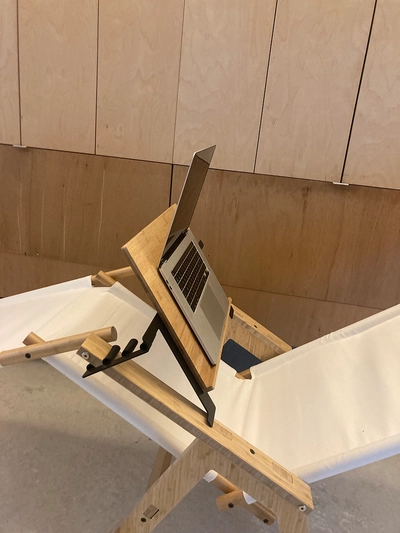
Not A Desk
5. Emma Terweduwe is a Belgian textile designer specialising in jacquard weaving. Her pieces are luxurious and expressive, combining natural and sustainable materials. The pieces are made based on a unique process of felting woven fabrics and have a colourful and strong graphic design. Emma is aiming at the gallery circuit with her Gradient rugs. She is targeting a wider audience with the new GRID collection of home textiles.

GRID, Emma Terweduwe
6. Manuel Leromain enjoys cutting, gluing and assembling shapes and colours to create a unique and inspiring universe. The Childhood collection evokes memories of the mill where he grew up. It is a series of multicoloured wall hangings in jacquard fabric that make people dream and think of journeys.
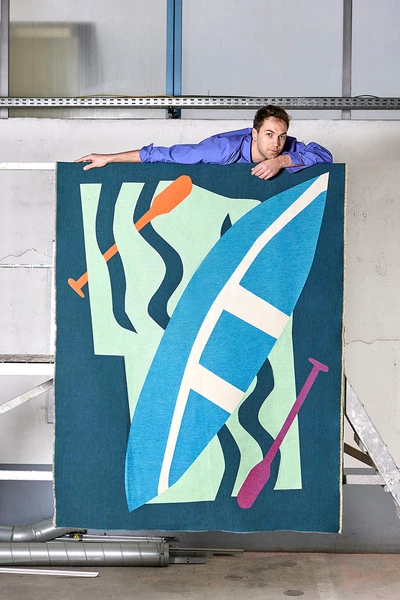
Childhood, Manuel Leromain © Sam Gilbert
7. Studio Tim Somers participated in the Salone Satellite for the second time. This year, he showed Piédestal, a collection of pedestals, aiming to create its own identity in the concept of function and different woodworking techniques. Each Piédestal is made from a combination of different types of wood such as chestnut, elm, cherry and walnut. Due to the height and different possibilities, the function varies. The platform and spheres can always be mounted differently.
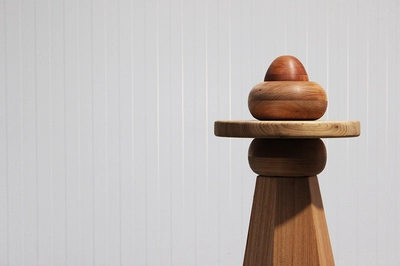
Piédestal, Studio Tim Somers
8. Extremis presented Panigiri in a southern atmosphere. Formally not very surprising, although it is also available with an attachable chair element for more seating comfort. Panigiri consists of just three basic elements: a centre top, two end tops and the legs. Those three elements provide ample space for eight people and each additional middle leaf creates space for four more, endlessly extendable. Extremely modular on the one hand, compact and transport-friendly on the other, because all Panigiri table elements fit on one pallet.
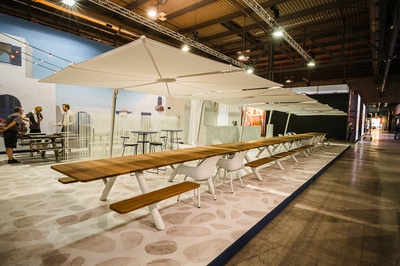
Panigiri, Extremis
9. Hind Rabii's Half & Half pendant lamp, designed by Alain Gilles, stems from a reflection on the difference there can be in perception during the day and at night. Like day and night, the pendant lamp consists of two parts. The lower part is quite classic with its semicircular opal glass. The upper part, in ceramic, has a typical cross shape and emphasises the personality of the pendant lamp when daylight falls on it. The pendant lamps, in two different sizes, can be used as a single pendant lamp or you can use them to create modern chandeliers by combining several pendant lamps at different heights.
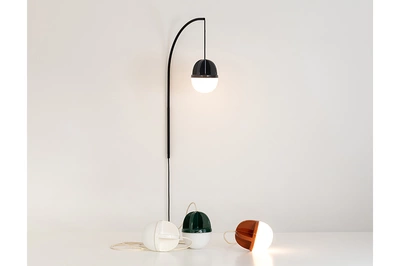
Half & Half, Hind Rabii
10. B Brand was founded in 2019 by interior designer Ben Depuydt and renowned architect Luc Binst. Their B7 lounge is a seating concept in collaboration with Bulo. This modular living solution consists of modular elements with seating, table, charging and storage functions. In this way, a smart living solution can be created for both residential and public spaces. The sleek design integrates seamlessly into any interior, from a living room to a hotel lobby.
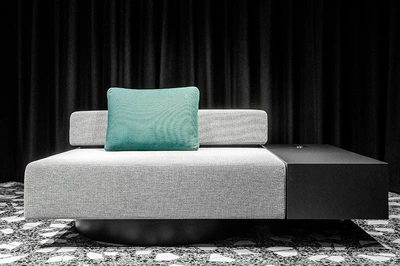
B7, B Brand and Bulo
11. Voor Dries Truyers, a furniture design student at the VOMO school in Mechelen, playing, combining and creatively experimenting with ordinary and unusual materials is one of the most fascinating aspects of furniture design. Kurk-kruK is a circular stool made from wine corks and residual wood from the veneer industry.
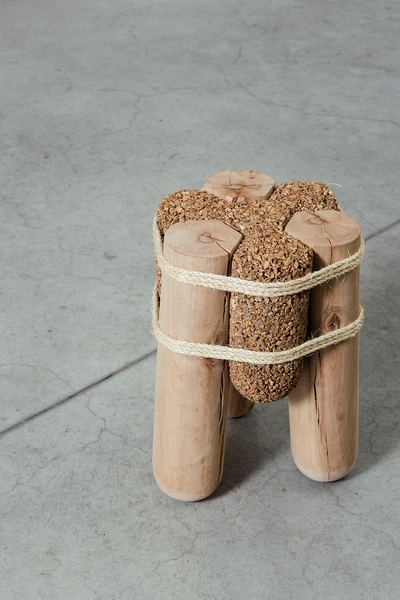
Kurk-kruK, Dries Truyers © Katoo Peeters
12. Sam Kerckaert wants the user to cherish the objects, take them with him for life and later pass them on. The stool is the result of research into different forms, materials and techniques. Bending techniques were applied to the back. Many different thin layers of walnut are attached to each other using a mould, creating a circle with a small radius. The variation of black, red and brown walnut wood creates a sense of familiarity and warmth.
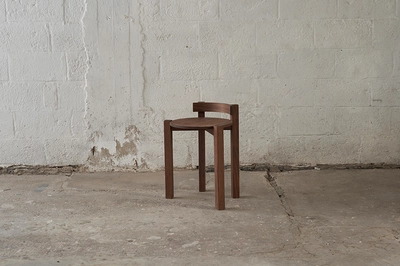
Kruk, Sam Kerckaert © Alwin Vyvey
13. An Gillis transforms local intangible heritage into objects that evoke emotion and reconnect people with their roots. The work she presented in Milan tells the story of her own hometown of Tienen, which was very prosperous in the past because of its sugar factory. TheSugar Mirror makes citizens proud of their heritage and themselves again. The mirror has the volume and imagery of an enlarged pack of sugar cubes.
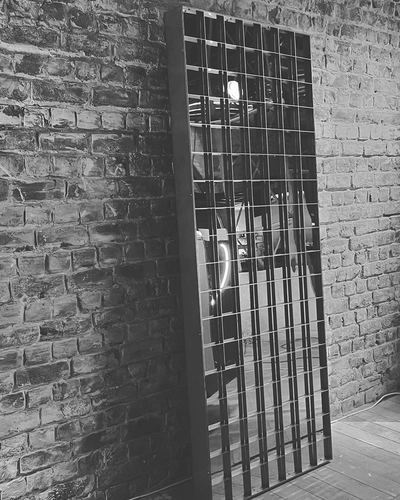
The Sugar Mirror, An Gillis
14. Serax has partnered with Milanese fashion label Marni. Marni has been releasing colourful outdoor furniture for several years, and their designer Francesco Risso has been making his own ceramics since corona. The result is a playful floral collection of no less than 120 pieces, available in shops from August.
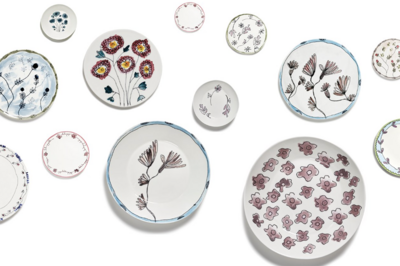
Servies, Serax and Marni
15. Vincent Van Duysen reconfigures and adds character to the modern dining room with the new table design Mateo, inspired by the catering space in the new Pavilion at Molteni&C headquarters. The Mateo table consists of a slightly flared cylindrical base divided vertically into two sections. The top tapers subtly at the edges. Mateo can be extended with a rotating central element, Lazy Susan, a typical element of oriental culture.
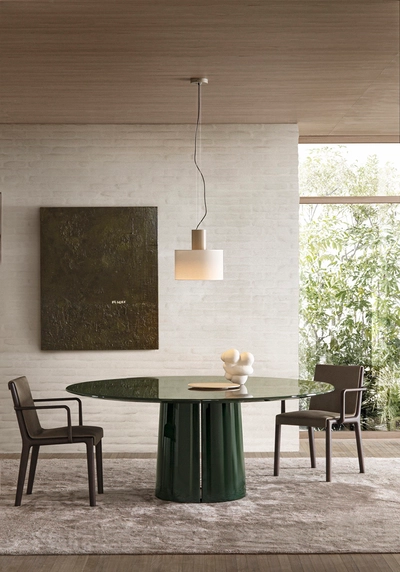
Mateo, Vincent Van Duysen
16. Like Tribu, Limited Edition also left the Salone. They could be found in Brera. Inspired by the style of Memphis architects, Retro Chic plays with beautiful, bright colours and a fun geometric pattern: a design that really takes you back in time. The rug is made of natural fibres - 50% wool and 50% sea silk - and is available in five different colour palettes.
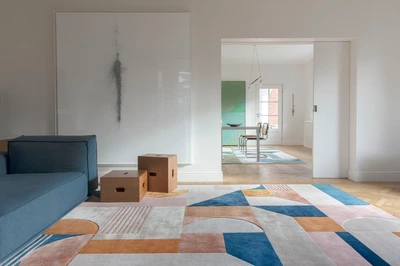
Retro Chic, Limited Edition
17. Rosie Broadhead is a resident of MAD Brussels. Developed in collaboration with microbiologist Christopher Callewaert, her Skin II project aims to use what is naturally on our bodies to make our clothes work better. Our skin acts as a primary defence against germs and houses hundreds of millions of micro-organisms that keep us healthy. Rosie strategically placed probiotic bacteria on the skin-tight garment in places that typically produce the most sweat such as the armpits, underarms, chest and sides of the torso. These are activated as soon as they come into contact with sweat. They overpower other less favourable bacteria already present on the skin. Body odour is reduced, cell renewal is stimulated and the immune system improves.
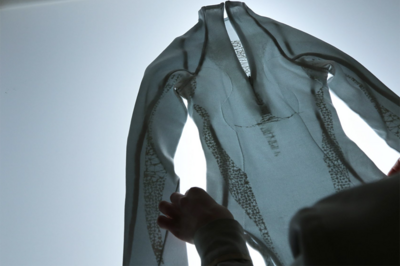
Skin II, Rosie Broadhead
18. At the Design Academy in Eindhoven, Juliette Vandermosten created Meanders, a table game and tool to create open conversation spaces in families dealing with dementia. By helping participants listen to each other, the collaborative board game enables them to communicate differently and from a place of vulnerability. Meanders strikes a balance between fun and complex emotions and encourages participants to reconnect and rethink their relationships through mutual caring.
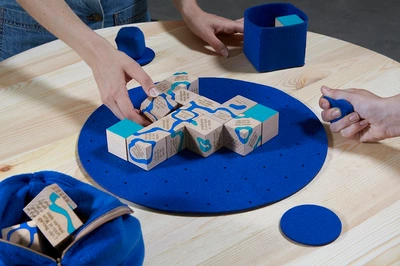
Meanders, Juliette Vandermosten © Nicole Marnati
19. Not to be seen, but won prizes. Arthur Grethen and Léo Sprimont won second prize in Rossana Orlandi's RoPlastic Prize in the Inspiring Learning Projects category with their VAU.R308 project. They met while studying at ESAD in Valenciennes. They collected plastic along the banks of the Schelde, recycled it into material at Brussels-based Bel Albatros and used it to recreate a classic model sailboat, the Vaurien. More at vau-r.fr.
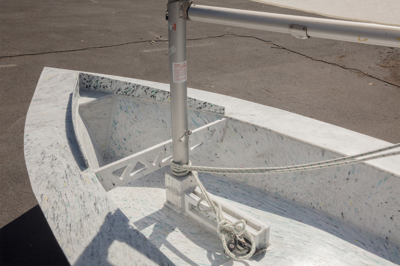
VAU.R308, Arthur Grethen and Léo Sprimont
20. In his designs Arthur Vandergucht explores the limit of an efficient balance between architecture and furniture design. He focuses on developing, explaining and questioning design strategies — by exploring connections and constructions. The design FR02 took shape by deploying repetitions of part one of the FRANS collection FR01. The collection is characterised by pure, clear materials. Natural and traditional connections play an essential role.
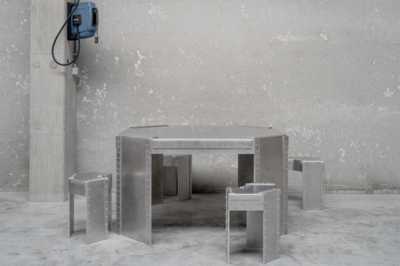
FR.02, Arthur Vandergucht
Cookies saved